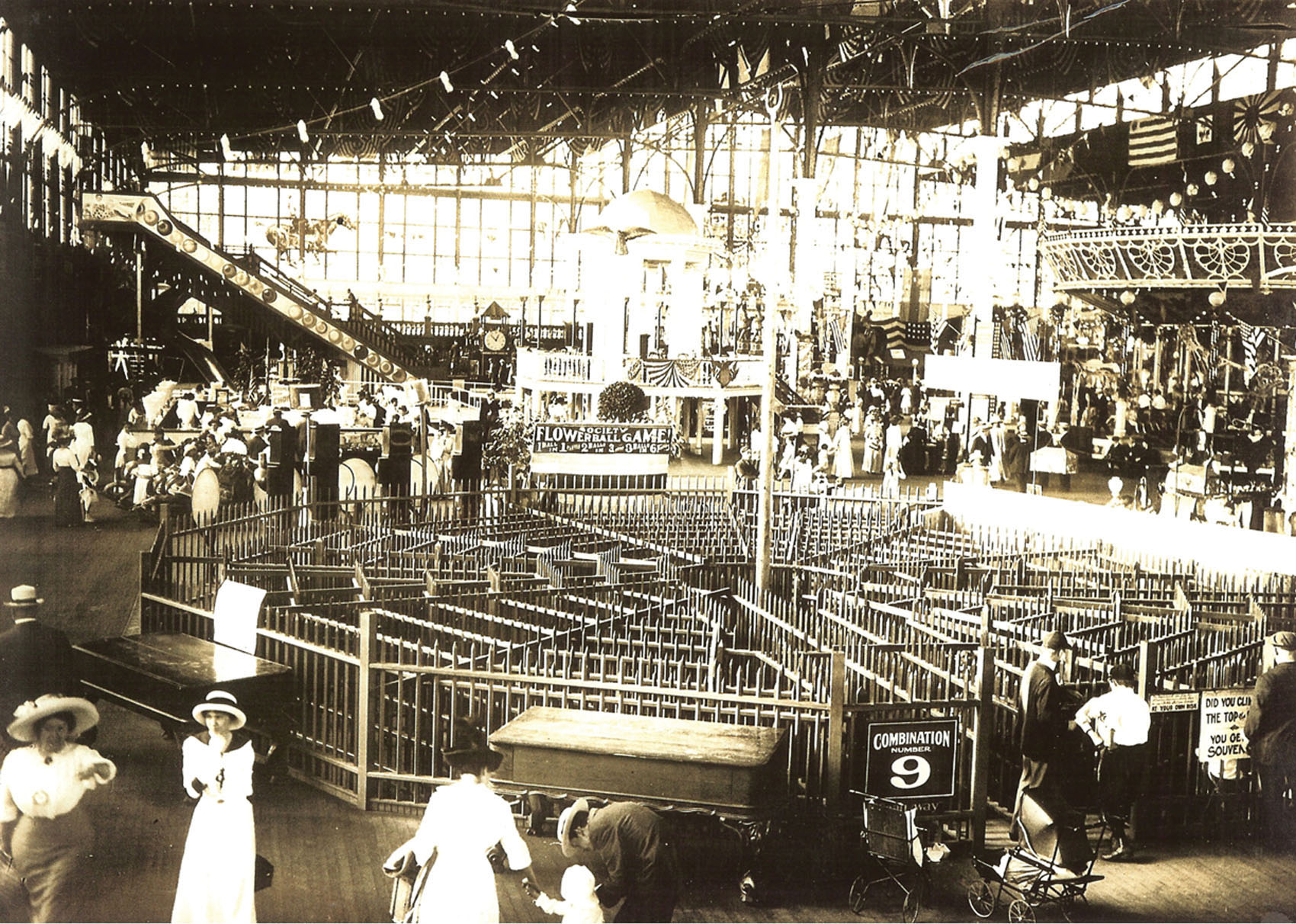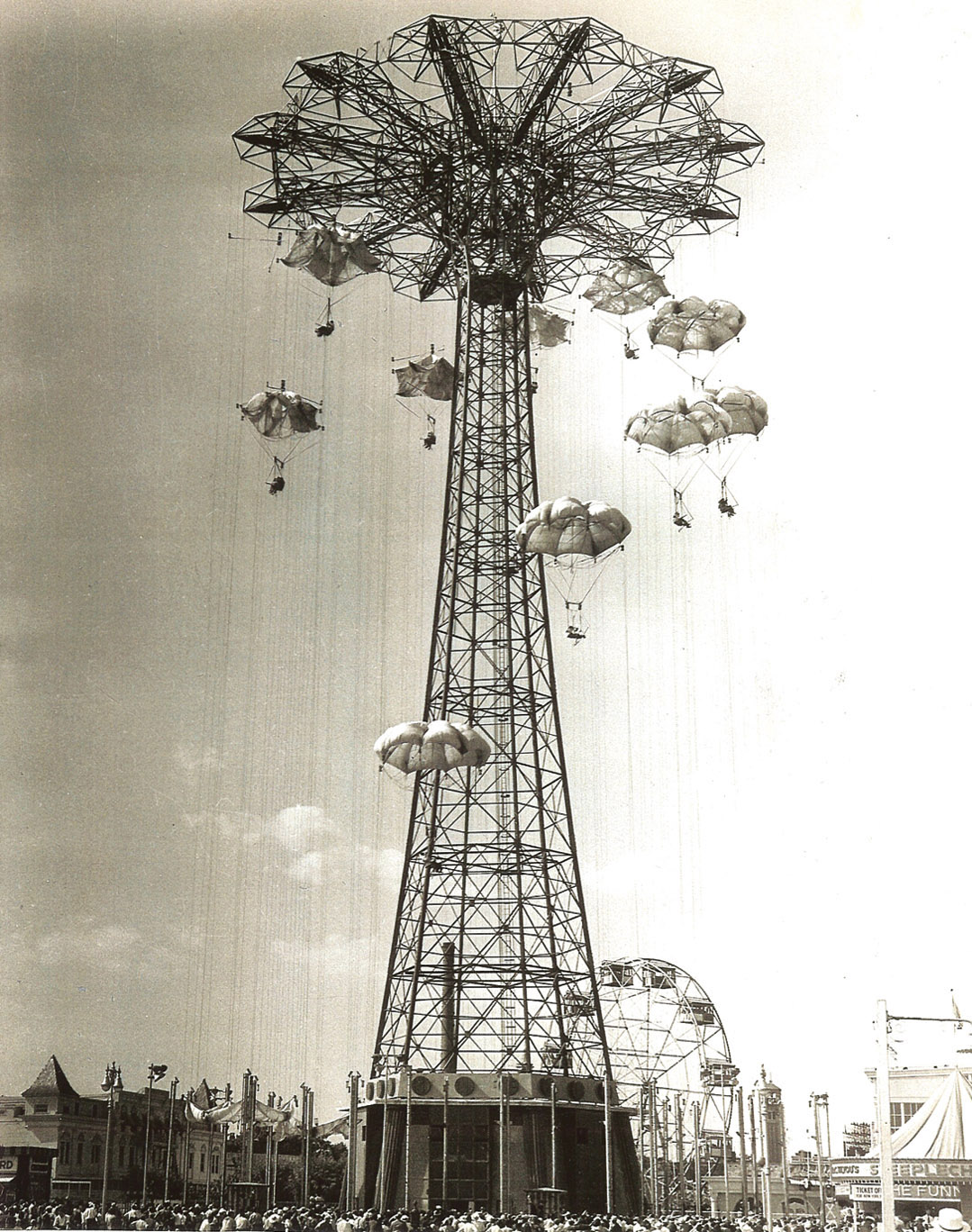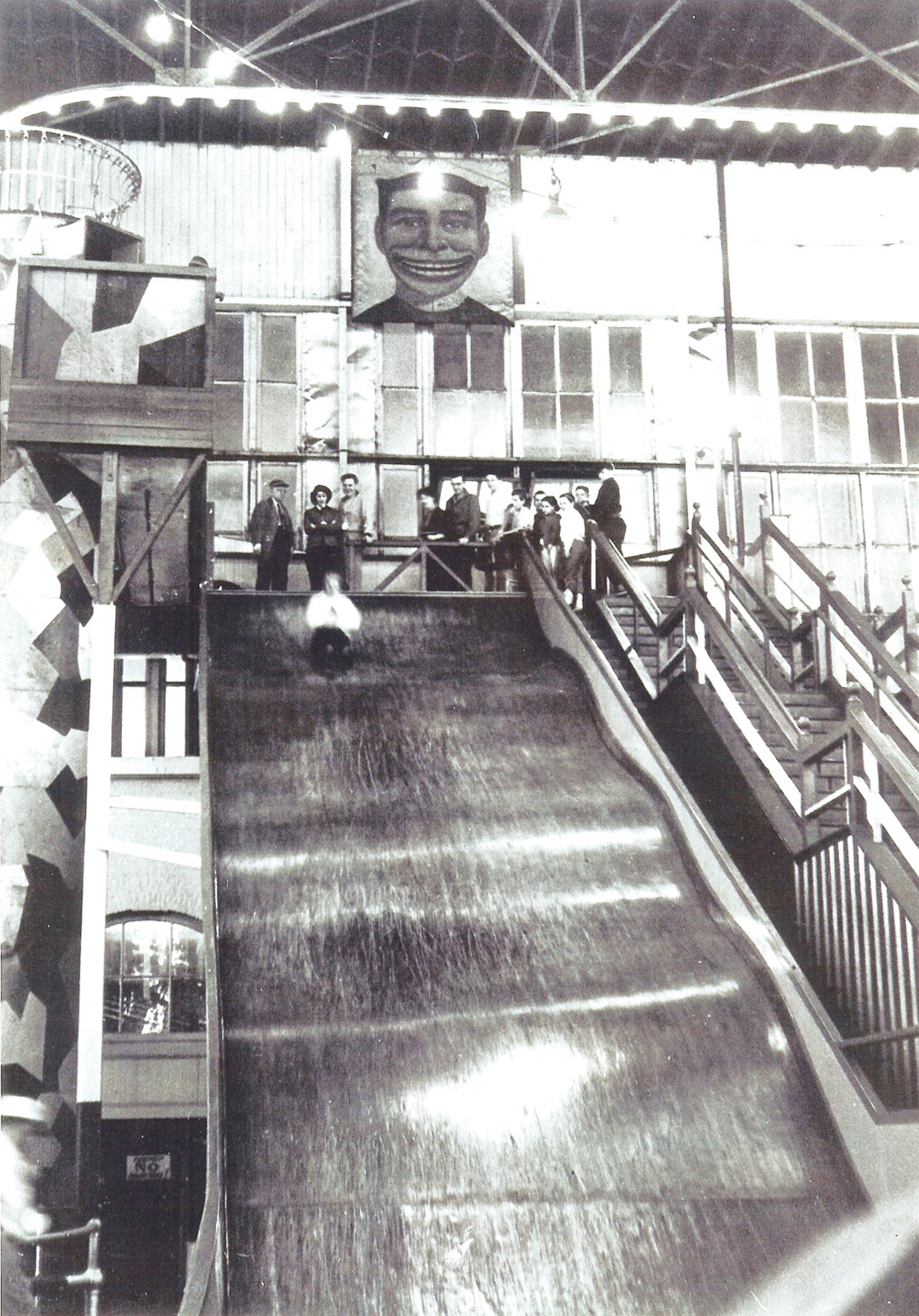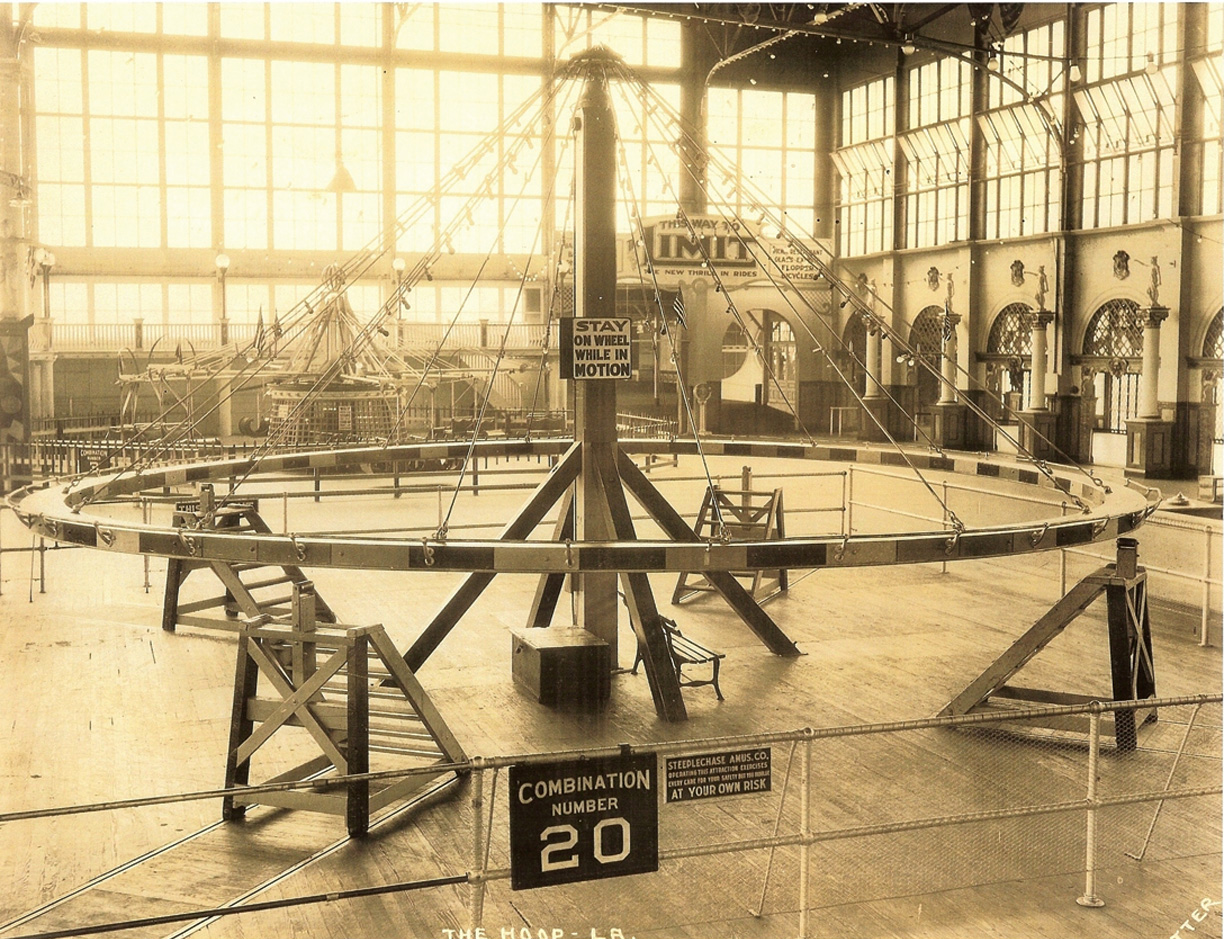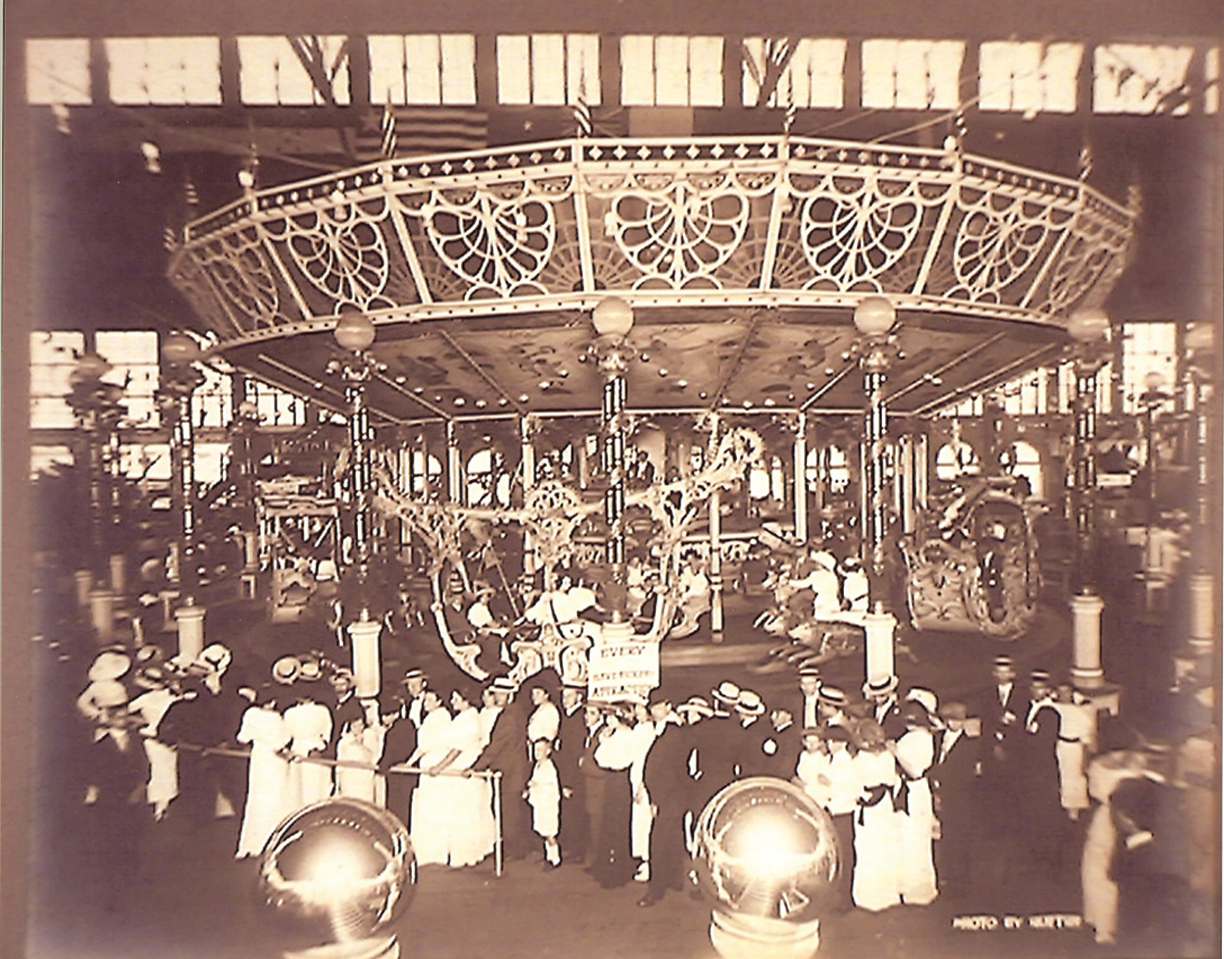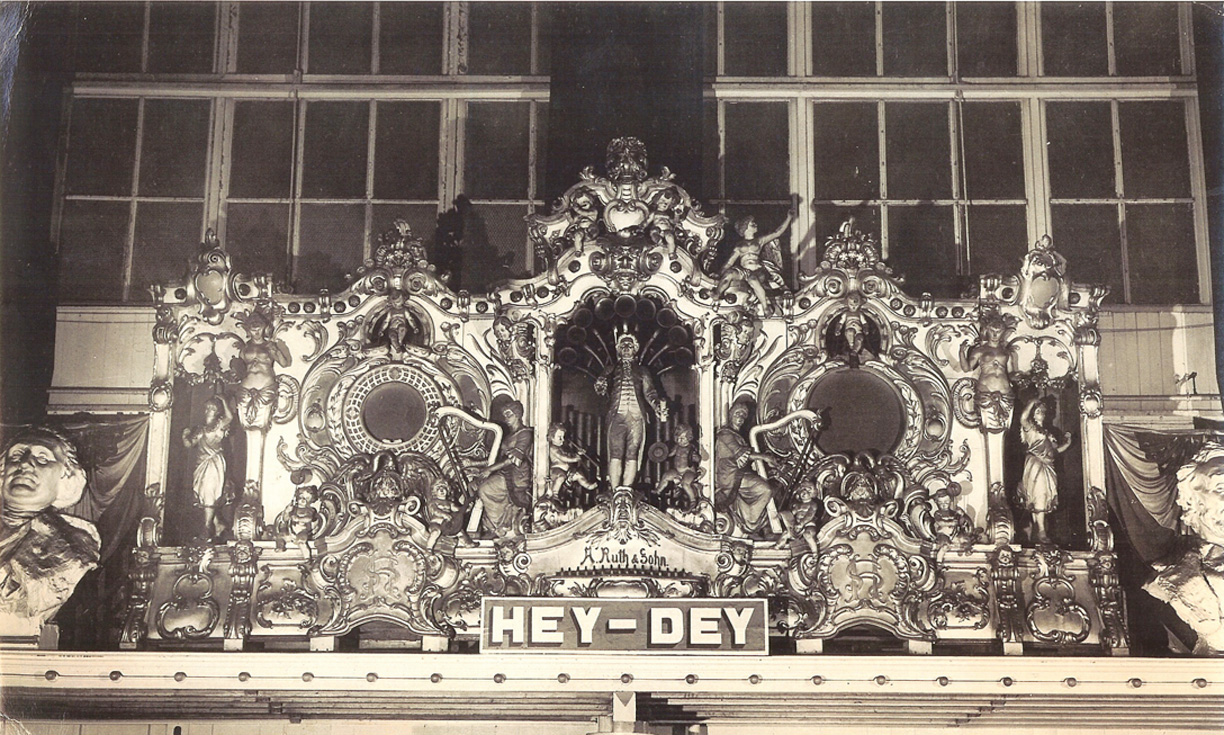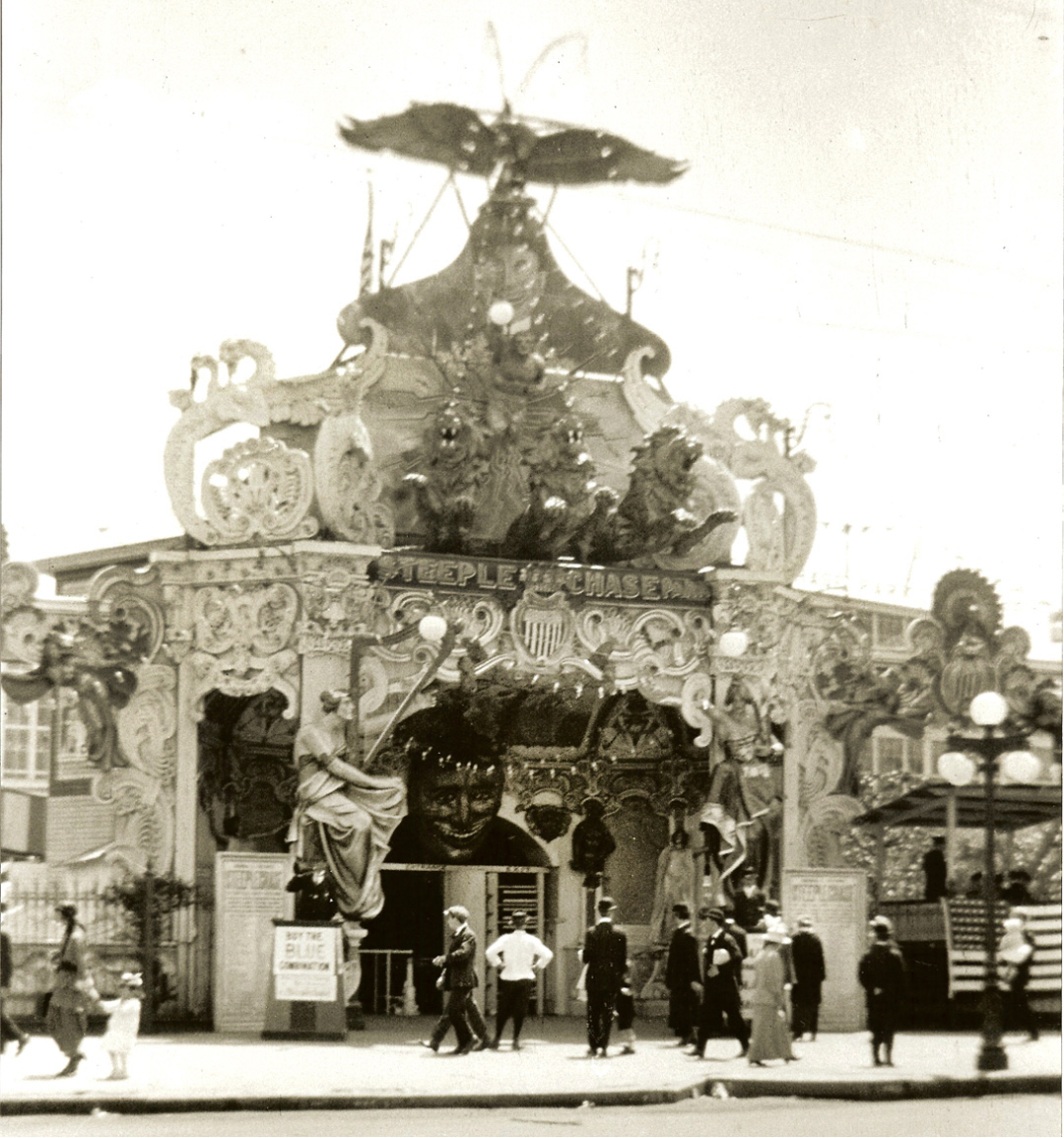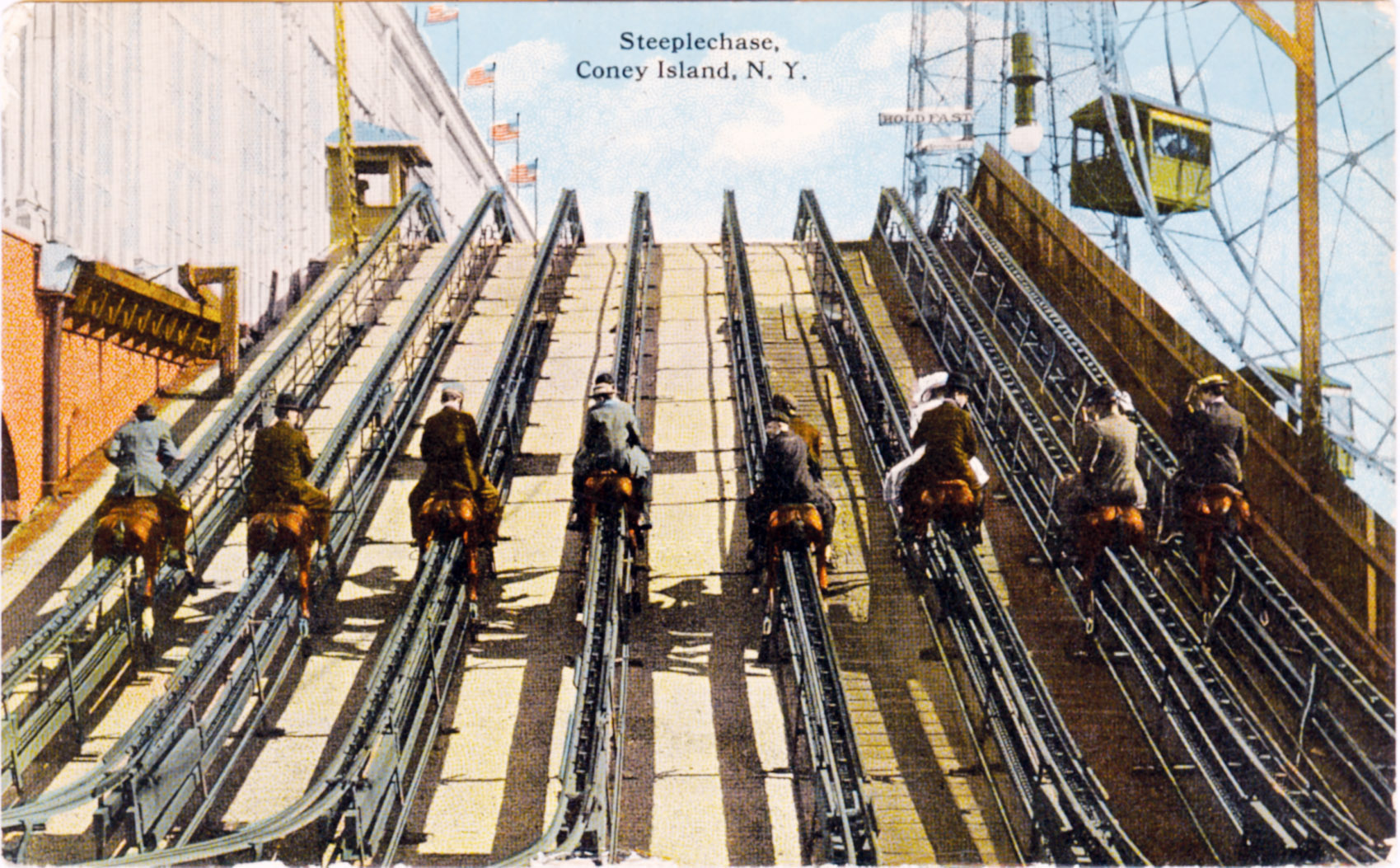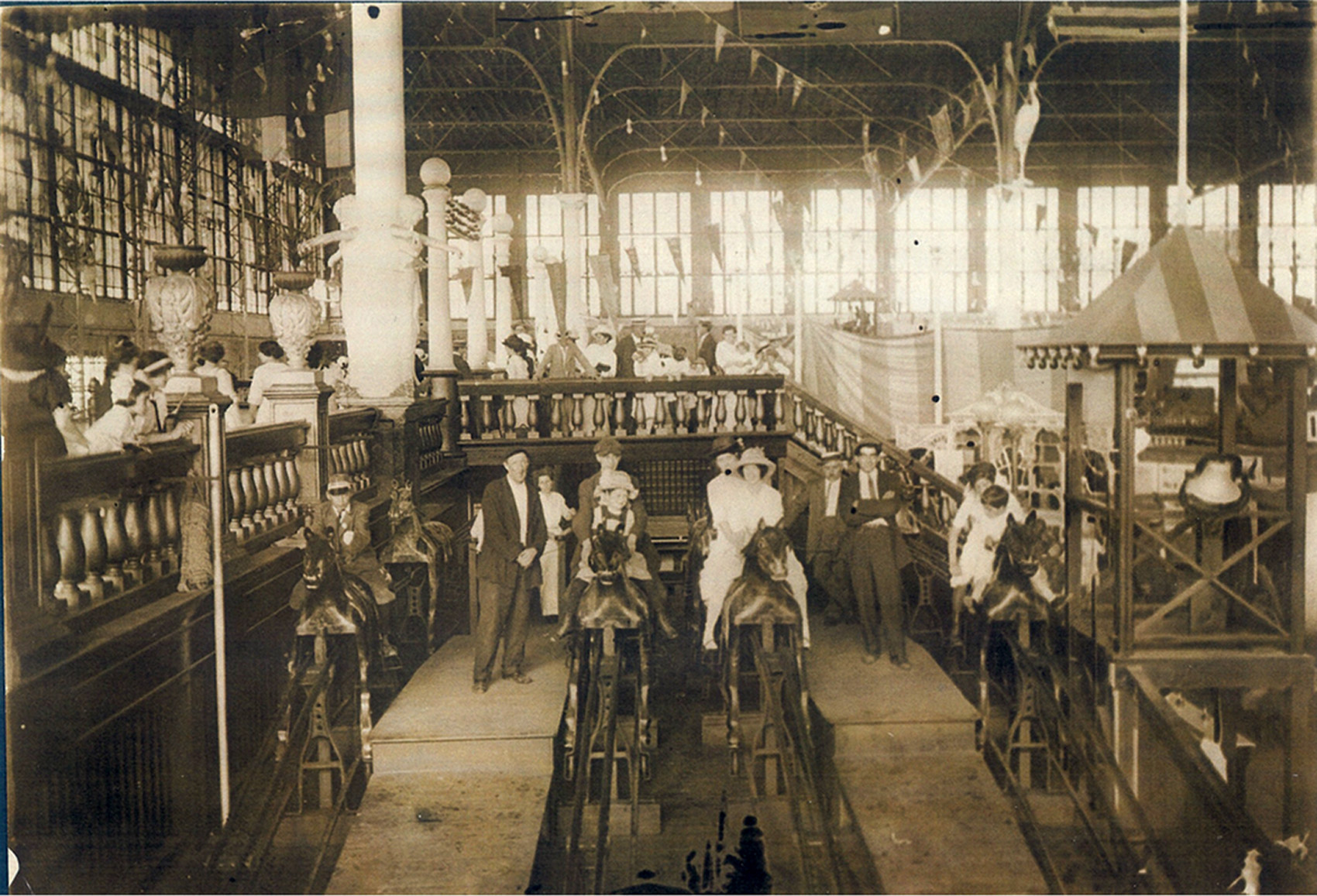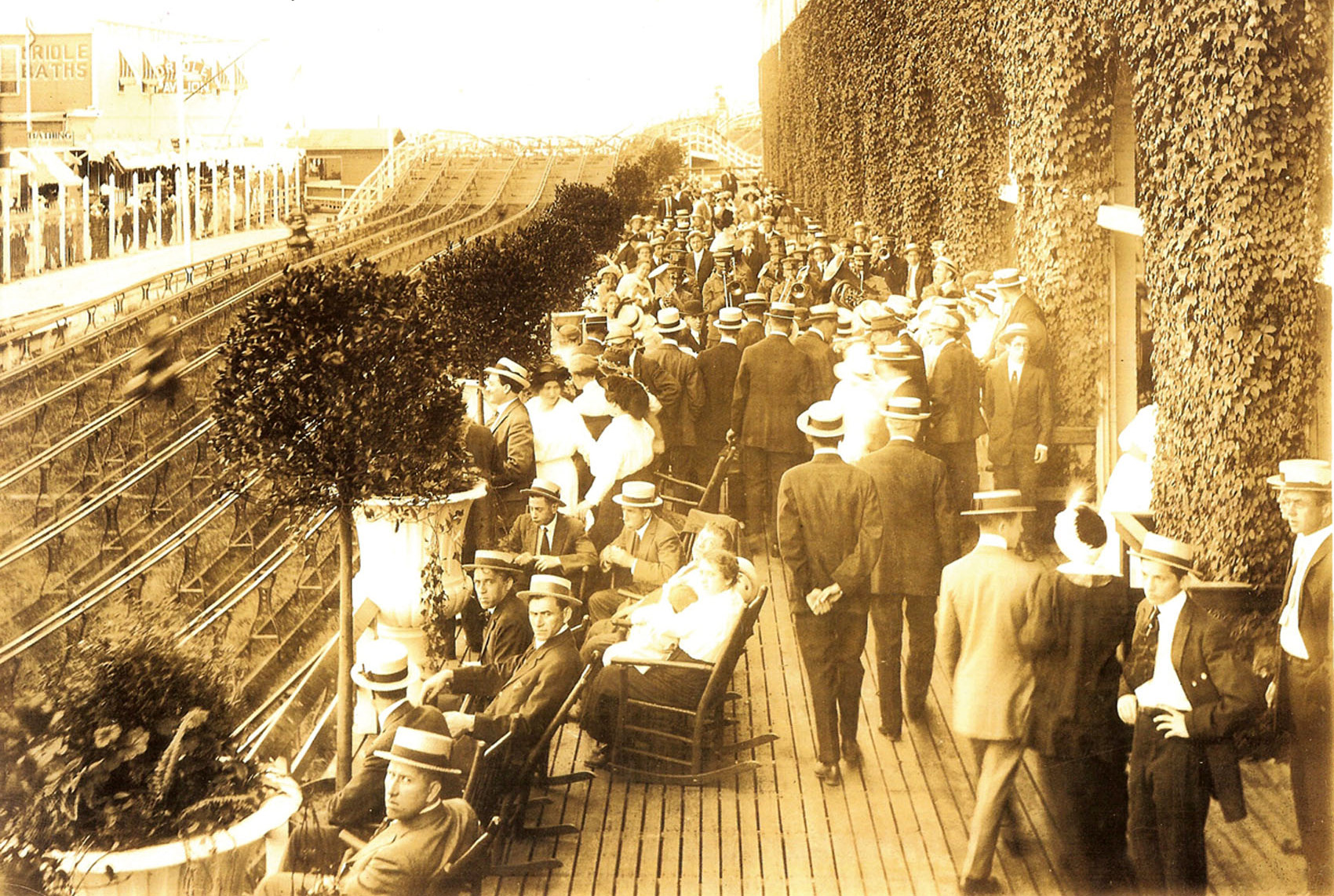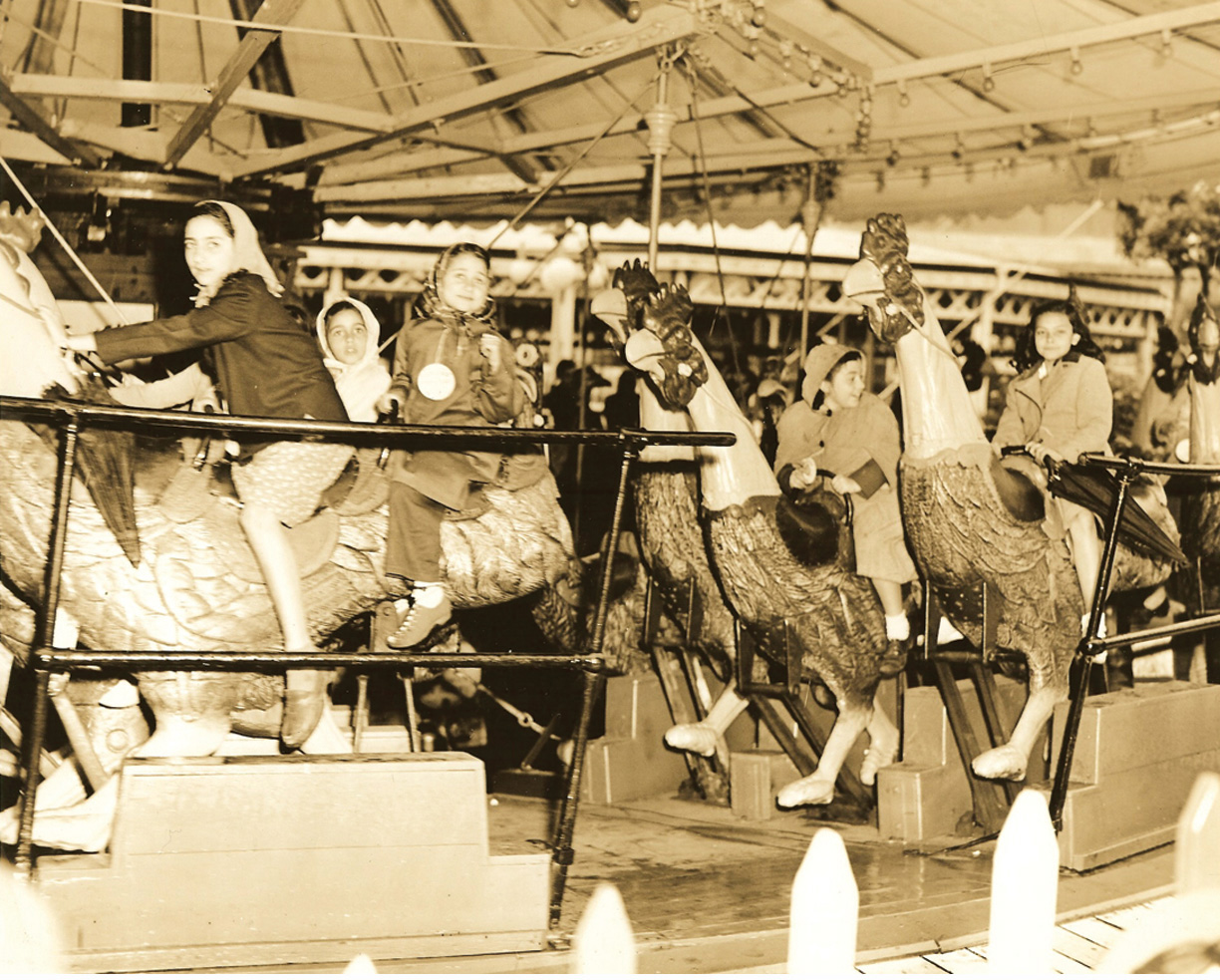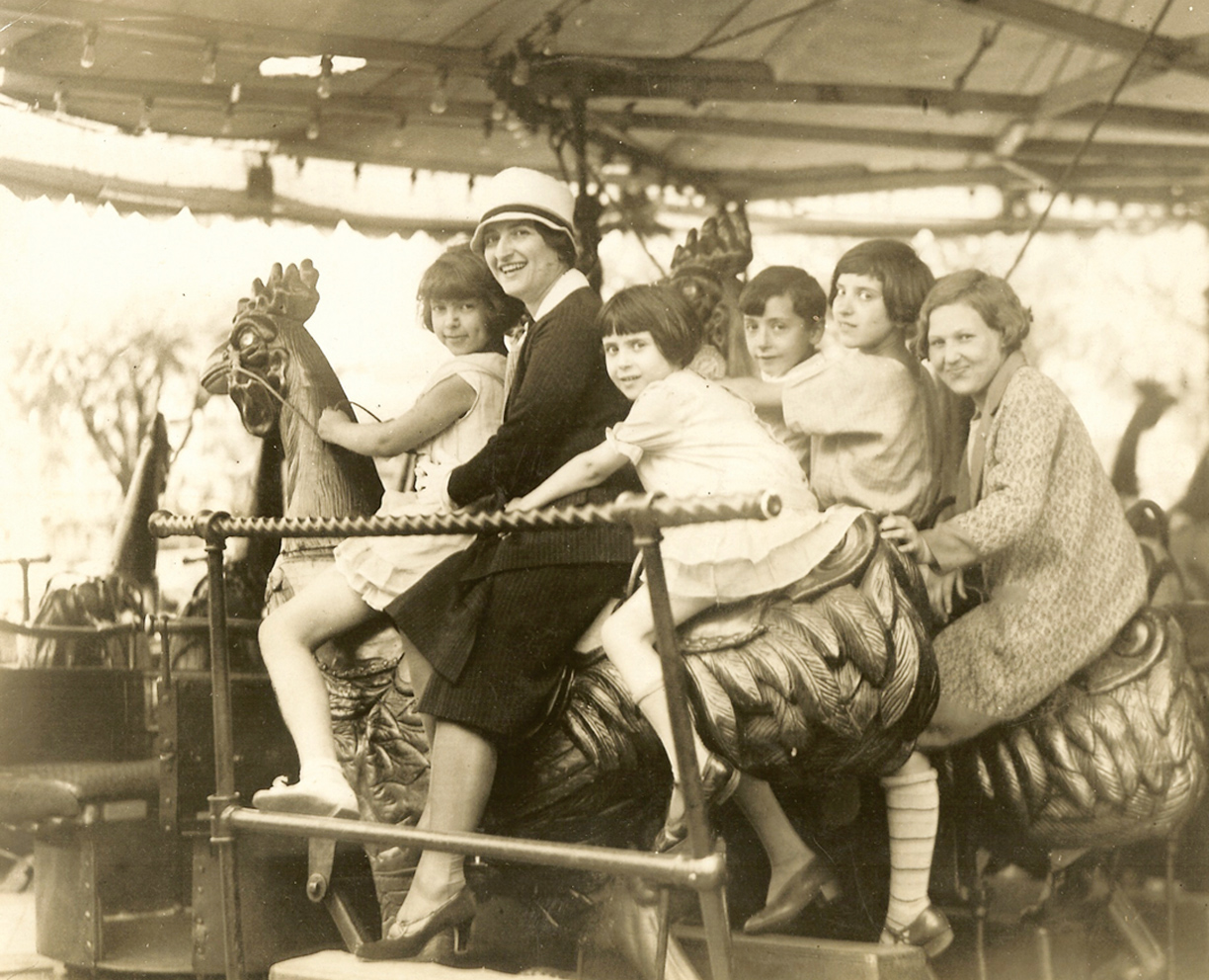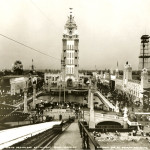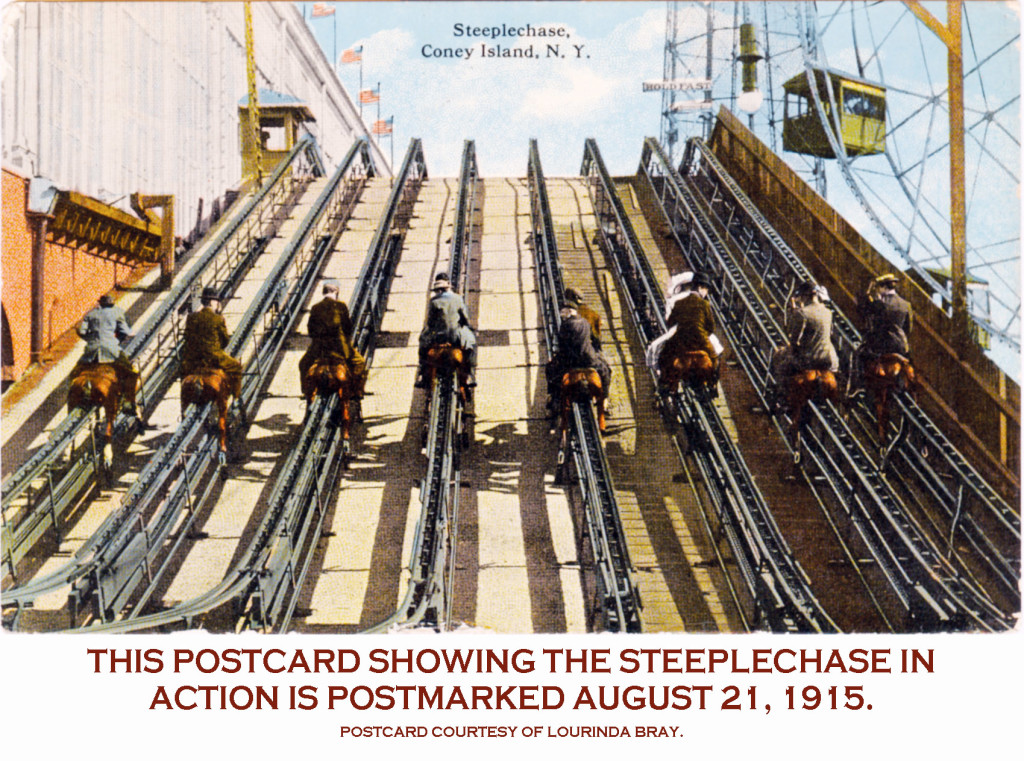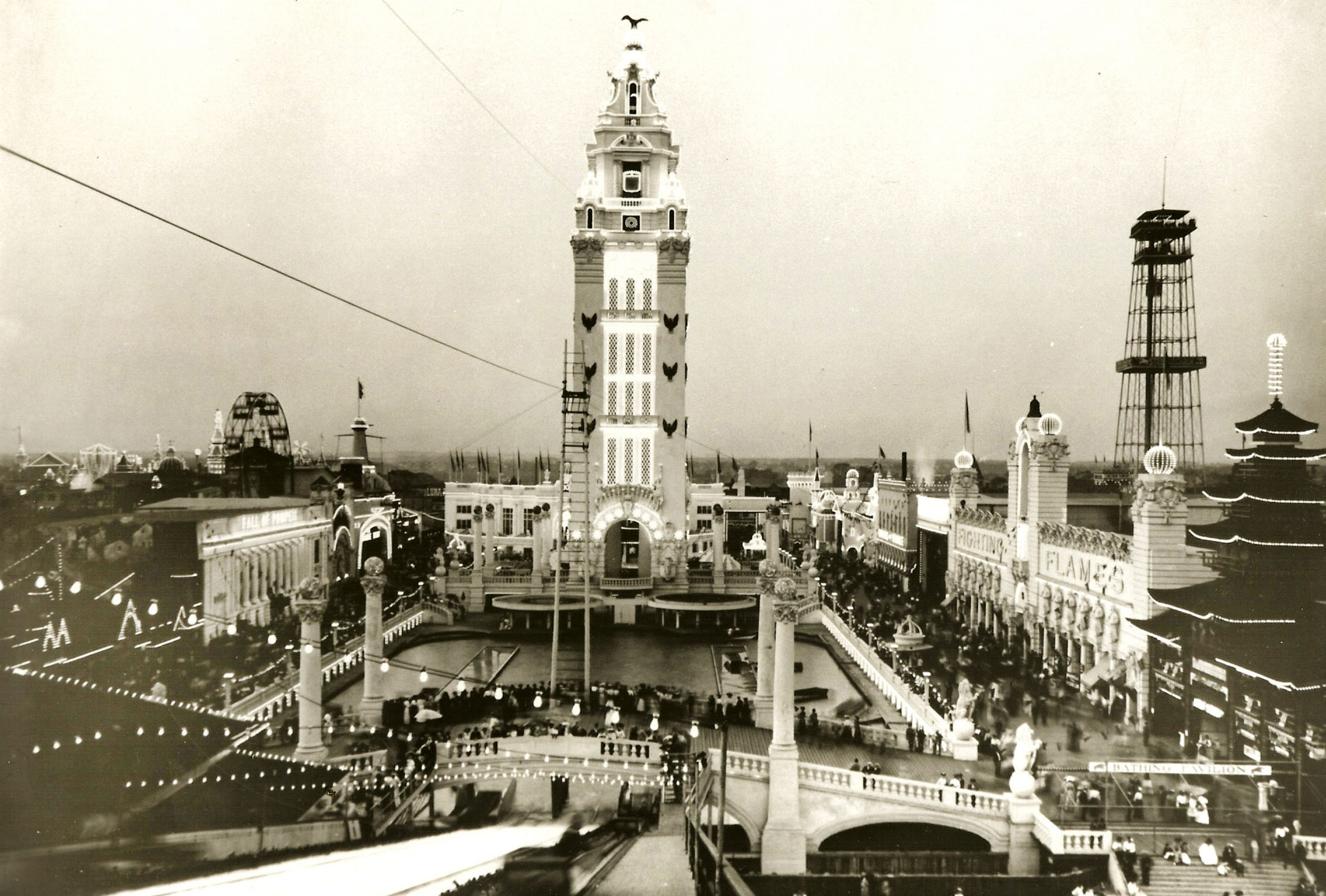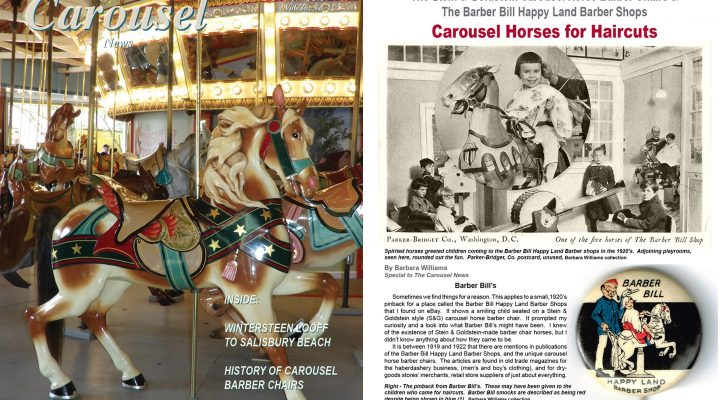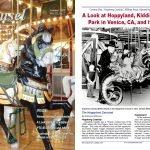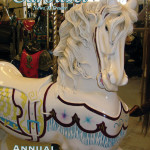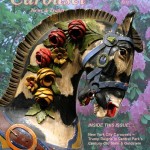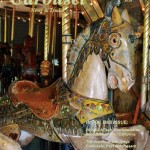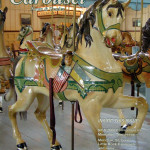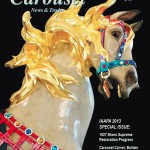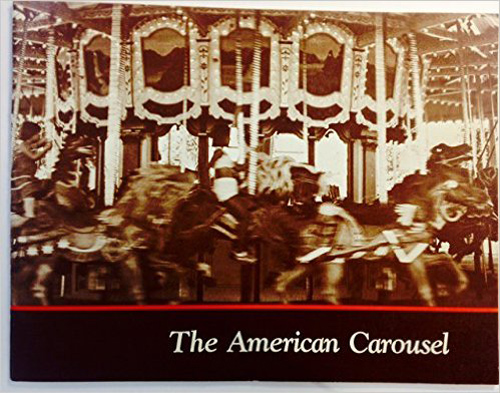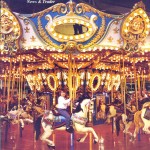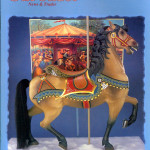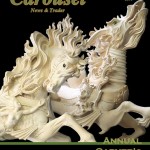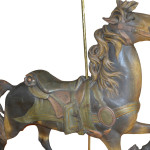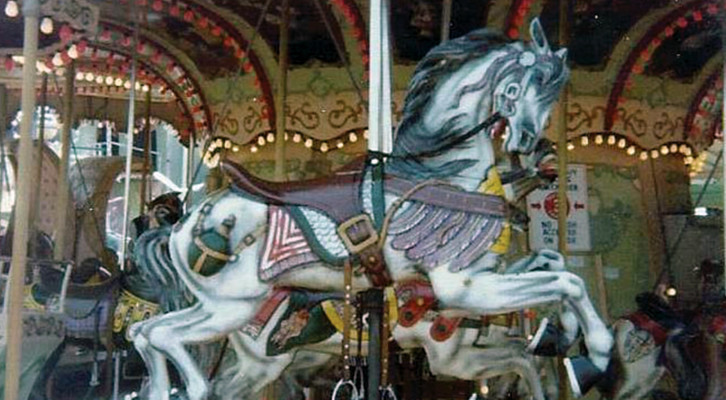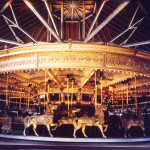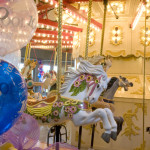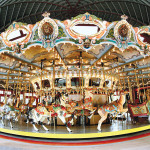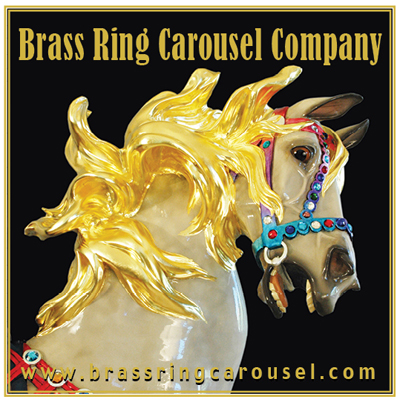Once America’s #1 Amusement Park – Coney Island’s Magical Steeplechase
Inside, Outside, and Everyone Was Involved… Coney Island’s Steeplechase Park was 100 Years Ahead of Its Time
CONEY ISLAND’S GREATEST PARKS – Part 1 of 3:
Steeplechase Park, Once America’s #1 Amusement Park.
By Paul Brigandi
Special to The Carousel News & Trader, from the June 2008, CNT.
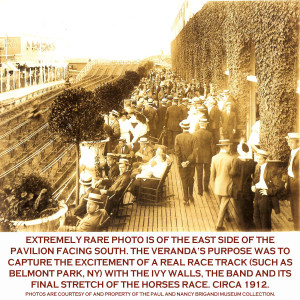 Below is an account of the rise and fall of just one of those world-renowned Coney Island attractions, Steeplechase Park. On July 28, 1907, George C. Tilyou suffered the devastating loss of Steeplechase Park. A fire started in a trash container from a lit cigar under the stairs in the “Cave of the Winds” boat ride attraction at approximately 4 a.m. It ultimately destroyed most of the park, at an estimated loss of over one million dollars. Once the fire was completely out, George Tilyou promised to build a bigger and better Steeplechase.
Below is an account of the rise and fall of just one of those world-renowned Coney Island attractions, Steeplechase Park. On July 28, 1907, George C. Tilyou suffered the devastating loss of Steeplechase Park. A fire started in a trash container from a lit cigar under the stairs in the “Cave of the Winds” boat ride attraction at approximately 4 a.m. It ultimately destroyed most of the park, at an estimated loss of over one million dollars. Once the fire was completely out, George Tilyou promised to build a bigger and better Steeplechase.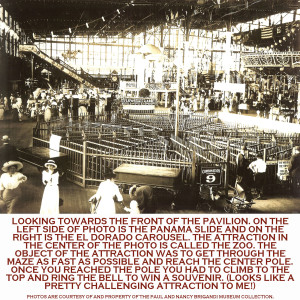
Being the showman that he was, he immediately started charging 10 cents to see the ruins. At that time in 1907 Luna Park and Dreamland were such magnificent amusement parks that George Tilyou could not build a better park. Since he couldn’t build a better park he did the next best thing, he created an indoor amusement park. Originally he envisioned a totally indoor amusement park on his 15-acres; however, the cost was too exorbitant. So he settled on a 2 ½ acre indoor Pavilion of Fun.
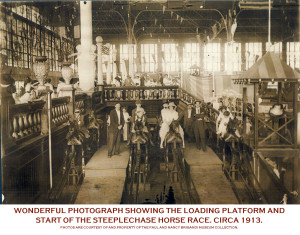 On March 17, 1908, St. Patrick’s Day, the indoor Pavilion of Fun opened. George stated that this was his lucky day – not only did Steeplechase open again but his son Frank Tilyou was born. The building was constructed out of steel, glass and concrete at a cost of $450,000. Its size was 270’W x 450’L x 63’H. Its main purpose was to capitalize on rainy days when Luna Park and Dreamland could not open. George also wanted to build a fireproof park, since he had just lost the original Steeplechase in July of 1907. Although the pavilion was built out of steel, glass and concrete, the flooring and most of the signature amusement devices that he invented were made out of maple wood. The “Human Whirl Pool,” “ Hoop-La,” “Human Pool Table,” “Human Roulette Wheel” and the “Panama Slide” were some of George Tilyou’s inventions.
On March 17, 1908, St. Patrick’s Day, the indoor Pavilion of Fun opened. George stated that this was his lucky day – not only did Steeplechase open again but his son Frank Tilyou was born. The building was constructed out of steel, glass and concrete at a cost of $450,000. Its size was 270’W x 450’L x 63’H. Its main purpose was to capitalize on rainy days when Luna Park and Dreamland could not open. George also wanted to build a fireproof park, since he had just lost the original Steeplechase in July of 1907. Although the pavilion was built out of steel, glass and concrete, the flooring and most of the signature amusement devices that he invented were made out of maple wood. The “Human Whirl Pool,” “ Hoop-La,” “Human Pool Table,” “Human Roulette Wheel” and the “Panama Slide” were some of George Tilyou’s inventions.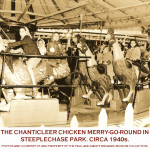
For the time George had a state of the art high pressure sprinkler system installed in the pavilion. Although George never invented the Steeplechase Horse Race, he did perfect them. (He had purchased the patent rights for the U.S. and Canada in 1897 from William Cawdery of London England). The Steeplechase Horse Race needed to be adapted to the new building. During the years of 1908, 1909, 1910 and 1912, George was constantly changing the design of the track as the park evolved.
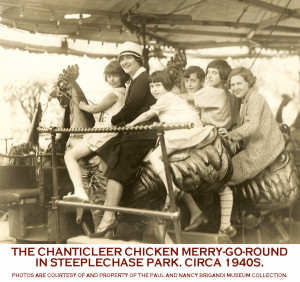 In 1911, George Tilyou added the Chanticleer Chicken Merry-go round. The merry-go-round was built by Orton Sons & Spooner Ltd. in England in the early 1890s. The Chanticleer operated in Luna Park in 1907. Shortly after that, the ride returned to Europe where it possibly operated on the carnival grounds in Glasgow untill 1910. While it was being transported back to America, the ship sank in the North Sea. Since it was not in deep waters, it was able to be salvaged. George Tilyou purchased the merry-go-round at a substantial discount, refurbished it and placed the ride in the front of the Pavilion of Fun for the 1911 season. The ride was steam-driven until 1924, when cinders from the steam engine ignited the wooden canopy setting it on fire and completely destroying it. After that, they immediately removed the steam engine and replaced it with a safer electric motor.
In 1911, George Tilyou added the Chanticleer Chicken Merry-go round. The merry-go-round was built by Orton Sons & Spooner Ltd. in England in the early 1890s. The Chanticleer operated in Luna Park in 1907. Shortly after that, the ride returned to Europe where it possibly operated on the carnival grounds in Glasgow untill 1910. While it was being transported back to America, the ship sank in the North Sea. Since it was not in deep waters, it was able to be salvaged. George Tilyou purchased the merry-go-round at a substantial discount, refurbished it and placed the ride in the front of the Pavilion of Fun for the 1911 season. The ride was steam-driven until 1924, when cinders from the steam engine ignited the wooden canopy setting it on fire and completely destroying it. After that, they immediately removed the steam engine and replaced it with a safer electric motor.
In 1910, George purchased the Venetian Gondola ride. I believe the ride was built in Europe, possibly by the Savage Co. of England. It had gondola-type chariots that undulated in a circle. Another ride during 1910 was the Traver Air Ships. In 1912, George added the worlds largest outdoor salt water swimming pool for the time. (George was inspired by the Sutro Baths, an indoor swimming establishment in San Francisco, CA, that was built in the late 19th century.) Along with the pool was the addition of 1,200 cabana-style lockers, steam rooms, handball courts, ping-pong tables and punching bags. With this addition George changed the personality of Steeplechase. It not only had the flavor of an amusement park, but also of a country club.
Another famous attraction in 1912 was the “Bow Hole Theater,” also known as the famous Steeplechase stage. The stage was the exit of the Steeplechase Horse Ride. It was an assortment of fun and slap-stick and sometimes risqué.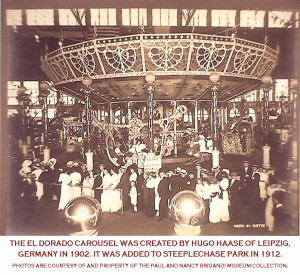
At the end of the 1911 season, George Tilyou purchased the greatest carousel in the world, the El Dorado, at an exorbitant price of $110,000. The El Dorado was carved in Leipzig, Germany, by Hugo Haase in 1902. It was presented to Kaiser Wilhelm II, the Emperor of Germany, in 1902 as a gift. His imperial seal decorates one of the chariots on the carousel. It came to Coney Island in 1910, where it was located on Surf Avenue opposite the Culver, Brighten & Smith Street Depot.
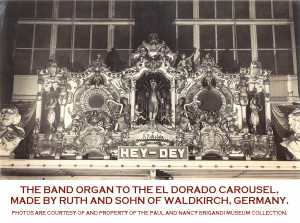 At the beginning of the 1911 season, Dreamland had its devastating fire that destroyed the entire park. The carousel survived the fire because it was inside the Galveston Flood building that was constructed out of cement and brick. Although the carousel did suffer some blistering from the extreme heat, the ride was repaired and operated throughout the 1911 season. George placed the carousel inside the pavilion for the 1912 season.
At the beginning of the 1911 season, Dreamland had its devastating fire that destroyed the entire park. The carousel survived the fire because it was inside the Galveston Flood building that was constructed out of cement and brick. Although the carousel did suffer some blistering from the extreme heat, the ride was repaired and operated throughout the 1911 season. George placed the carousel inside the pavilion for the 1912 season.
The carousel was 42’ high and was a mass of carvings with elaborate chariots, each one of a different theme, with three tiers of revolving platforms and each at a different speed. The innermost tier was a throne room surrounded by life-size angels with trumpets. The outer and inner tiers had six beautifully carved chariots. Twelve hand-carved pigs, 24 galloping horses and 1,500 flashing lights reflected the carved animals and figures in the mirrored posts. The façade of the carousel (which was made out of zinc) was placed as the corner entrance to Steeplechase on Surf Avenue in 1912.
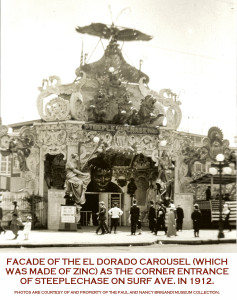 On Nov. 30, 1914, George Tilyou died from acute appendicitis at the age of 52. After his death, his son Edward Tilyou at the young age of 18 took over the operation of the park. He continues running the park, and in 1941 Steeplechase added the world-famous Parachute Jump. The parachute was originally invented by a retired U.S. Naval air commander, James H Strong, for the military paratroopers. He adopted the ride for the general public and placed it in the 1939-40 New York World’s Fair.
On Nov. 30, 1914, George Tilyou died from acute appendicitis at the age of 52. After his death, his son Edward Tilyou at the young age of 18 took over the operation of the park. He continues running the park, and in 1941 Steeplechase added the world-famous Parachute Jump. The parachute was originally invented by a retired U.S. Naval air commander, James H Strong, for the military paratroopers. He adopted the ride for the general public and placed it in the 1939-40 New York World’s Fair.
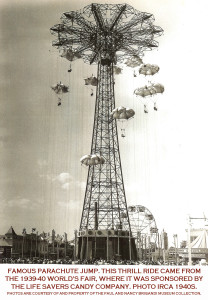 The Life Savers candy company sponsored the ride. In 1988, the parachute was declared a city landmark. The Tilyou family continued to operate Steeplechase Park through 1964. In 1965 Marie Tilyou (George Tilyou’s daughter) sold the park to developer Fred Trump. In December 1966, Fred Trump started to tear down Steeplechase Park.
The Life Savers candy company sponsored the ride. In 1988, the parachute was declared a city landmark. The Tilyou family continued to operate Steeplechase Park through 1964. In 1965 Marie Tilyou (George Tilyou’s daughter) sold the park to developer Fred Trump. In December 1966, Fred Trump started to tear down Steeplechase Park.
#
CONEY ISLAND’S GREATEST PARKS – Part 1: Steeplechase Park, Once America’s #1 Amusement Park.
By Paul and Nancy Brigandi
Reprinted from the June 2008, The Carousel News & Trader magazine.
This is the first in a three part series featuring (arguably) the greatest Amusement Parks ever built, Steeplechase Park, Luna Park and Dreamland, on Coney Island at the turn of the 20th Century.
In the Steeplechase Park article above, we state that the park opened on May 16, 1908. The New Steeplechase Park Mechanical Horse Race in fact did open to the public for the first time on Saturday, May 16, 1908. However, the Pavilion of Fun did not officially open until the following Saturday, May 23rd.
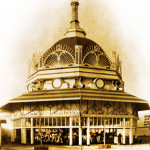 READ Part 2 – The Original, Romantic, Luna Park, Coney Island >>>
READ Part 2 – The Original, Romantic, Luna Park, Coney Island >>>
READ Part 3 – The Ultimate Dreamland, Coney Island >>>

